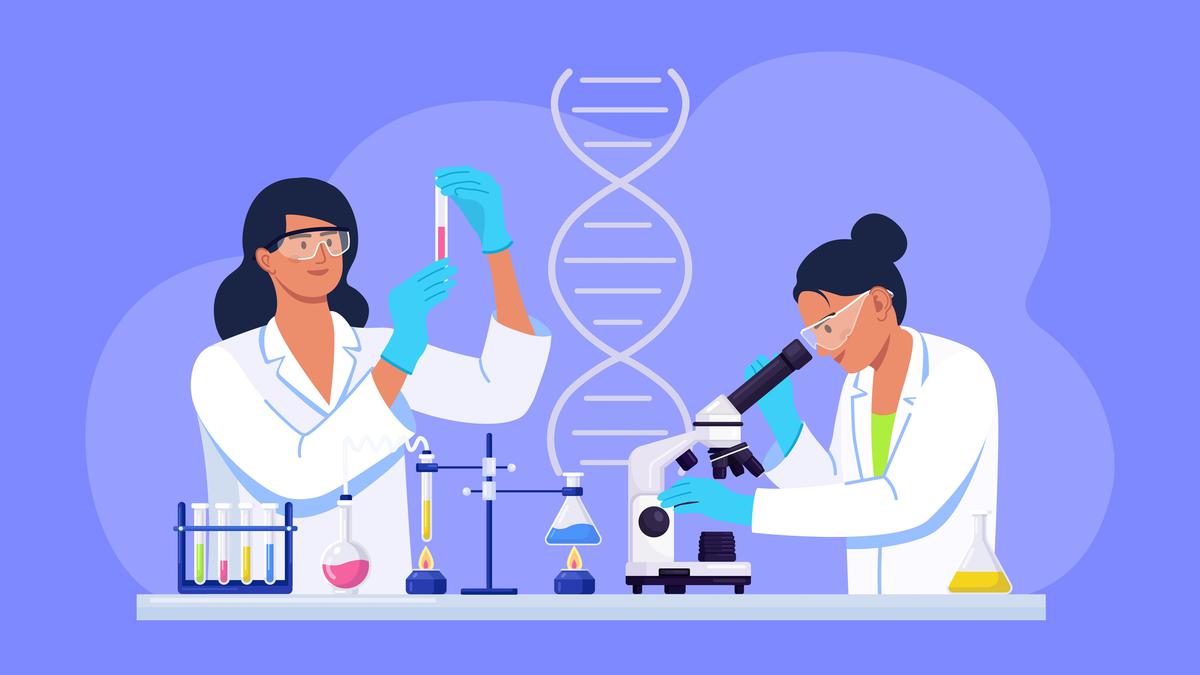
Remembering the forgotten women of science in India Premium
The Hindu
A list of books which talk about Indian women in science and struggles and accomplishments
The Indian Academy of Sciences founded by physicist and Nobel Laureate C.V. Raman in Bangalore in 1934 has never had a woman scientist at the helm. The academy’s statistics suggest women make up around 14% of India’s working scientists; only 15% of faculty members in various research institutes across the country are women.
The Shanti Swarup Bhatnagar Prize for Science & Technology given annually by the Council of Scientific and Industrial Research for notable research in biology, chemistry, physics, engineering, mathematics, medicine and environmental science, has been awarded to 571 scientists between 1958 and 2023. In the last 65 years, only 20 women scientists have received India’s most prestigious science award — for the first time in 1961 and the last in 2020.
There are explicit and implicit biases against women in science. People think men are more suited to the subject and women are innately not interested. The Matilda effect shows the exodus of women from science as they remain under-appreciated for their achievements while suffering discrimination in perks, promotions and opportunities.
Science cannot be a monolith of men and their research alone. Yet women have to fight psychological pressures and systemic challenges in their scientific journey. British chemist Rosalind Franklin who contributed to the discovery of the structure of DNA in 1951 and astrophysicist Jocelyn Bell who discovered the first radio pulsars in 1967 went unrecognised during their careers. Rajinder Jeet Hans-Gill wore a turban and a boy’s uniform in the mid-1950s to be allowed to study mathematics in a school in Punjab; biochemist Kamala Sohonie sat on a satyagraha so that IISc, Bangalore, would open its doors for women. Patriarchal oppression triggers a mindset that works against women but can a history of science be written based on a history of exclusion of women in science?
To examine the state of women scientists in India, Aashima Dogra and Nandita Jayaraj journeyed across science laboratories from Bhopal to Bhubaneswar and Bengaluru to Jammu in 2016. They engaged in thought-provoking interviews with young researchers and renowned scientists including Gagandeep Kang, Kiran Mazumdar-Shaw, Rohini Godbole, Prajval Shastri Majumdar to explore why gender inequality haunts Indian science.
The outcome is a riveting book, Lab Hopping: Women Scientists in India, which provides a fresh perspective on breaking stereotypes, apathy and sexism. The authors make no bones about the mediocrity in Indian science due to the shameful lack of diversity. They say societal expectations of family and childcare from a woman makes science a matter of gender, compelling every woman scientist to constantly perform her gender at the cost of due recognition.
The road map for the way out of this is to celebrate women scientists. The fact that the ISRO team of ‘rocket women’ who played a pivotal role in Chandrayan-II and III Moon missions were applauded would have inspired many budding scientists. There are publications that have documented the path breaking work of women scientists, and more needs to be done on this front.

The Karnataka government has drafted a comprehensive master plan for the integrated development of Kukke Subrahmanya temple, the State’s highest revenue-generating temple managed by the Hindu Religious Institutions and Charitable Endowments Department. The redevelopment initiative is estimated to cost around ₹254 crore and aims to enhance infrastructure and facilities for devotees.












